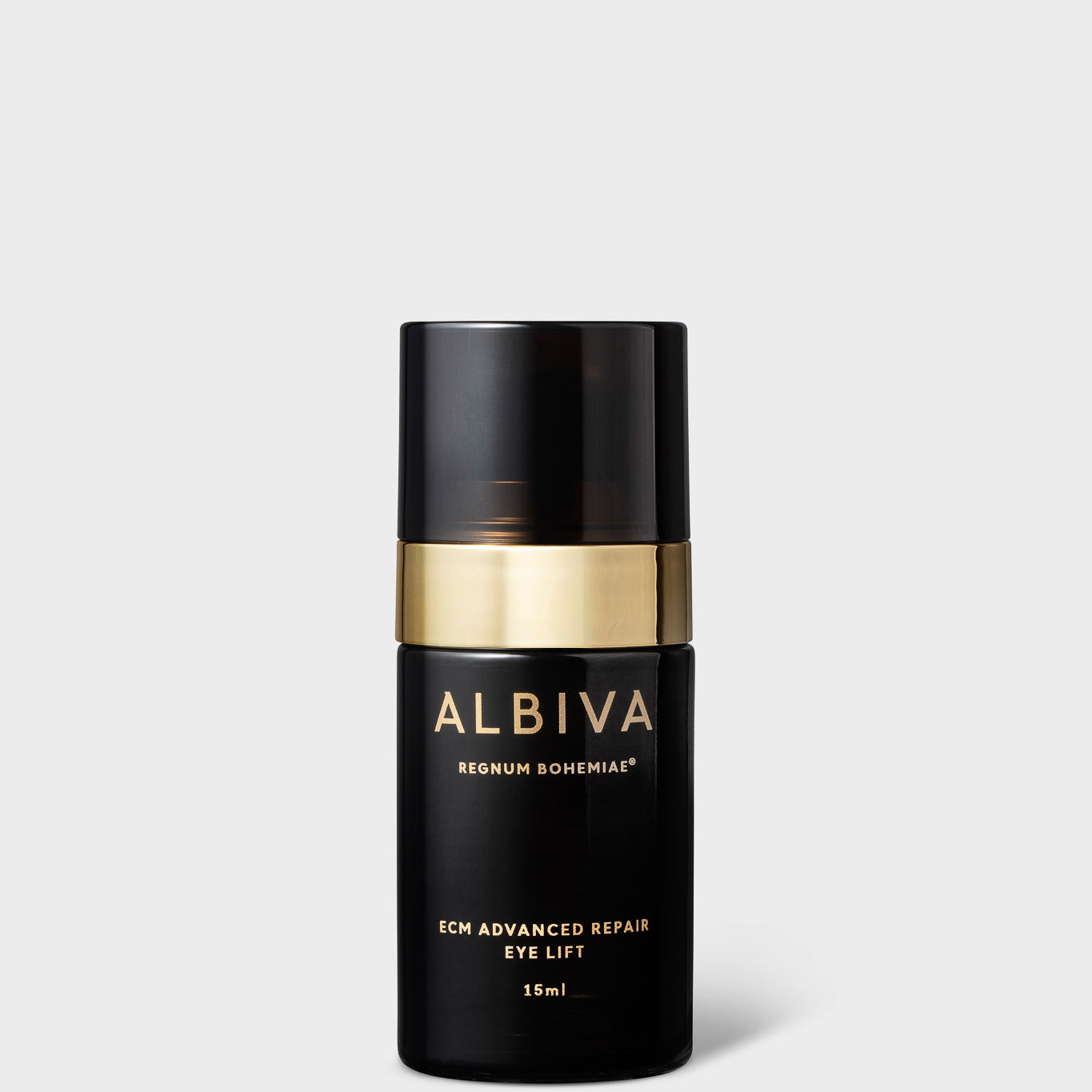Extracellular Matrix & Skin Health.

Cellular science plays an important role in our formulations. At Albiva we focus on cellular biochemical reactions by stimulating various cellular functions with phytochemicals (natural chemical constituents of plants).
To activate skin’s natural ability to repair itself and boost the natural process of restoring collagen and elastin, resulting in healthy‚ youthful and firm skin, every active ingredient has been specifically selected to support‚ stimulate‚ boost & prevent:
- ECM (Extracellular Matrix)
- Cellular Dynamism
- Cellular Communication
- Transdermal Absorption
- Transepidermal Water Loss
All living cells are dynamic and integrate a wide variety of biochemical and mechanical information‚ continuously adapting and responding to their environment. Signals transmitted by hormones‚ growth factors‚ neighboring cells or the Extracellular Matrix are sensed by cells and can trigger rapid changes in metabolism‚ gene expression‚ cell shape‚ dynamics and behaviour.
The ECM regulates cell’s dynamic behavior and facilitates the surrounding cells to repair and heal tissue. The ECM is composed of structural proteins (collagen‚ elastin) and glycosaminoglycans.
Let’s take a closer look at the Extracellular Matrix.
The dermis is a connective tissue composed of fibroblasts (rejuvenating cells) that produce proteins (eg. collagen and elastin)‚ which are deposited in the extracellular matrix (ECM).
Fibroblasts play a key role in the dermis architecture‚ as they organise a supporting network that brings firmness and elasticity to the skin.
As the skin ages‚ it loses both elasticity and firmness. Cell turnover slows down and collagen production decreases.The dermis structure is disorganised‚ resulting in skin slackening and an accentuation of wrinkles.
To prevent sagging and combat the signs of ageing‚ it is essential to reinforce the dermis structure‚ by targeting the cellular dynamism and stimulating fibroblast biomechanical functions.

At ALBIVA we stimulate cellular dynamism with the following active ingredients:
- Gemmotherapy—Carthamus Tinctorius (Safflower) Bud Extract
The extract contains proline‚ an amino-acid and a precursor of pro-collagen synthesis‚ high content of alpha-tocopherol‚ a well known antioxidant and 8’-hydroxyarctigenin which is a lignan (a growth hormone) found in certain plants which possesses cell proliferative and differentiation activities‚ as well as antioxidant properties.
- Spilanthes Acmella Extract (known as botanical botox)
Renowned for high content of alkylamides‚ boosts cellular dynamism by stimulating fibroblast biomechanical function‚ which inturn reorganises & tightens the collagen fibrenetwork. This reinforces the architecture of the dermis‚ enhances density of the skin and firmness.
- Evodia Rutaecarpa Fruit Extract (Wu Zhu Yu)
Stimulates extracellular release of citric oxide which dilates blood vessels‚ thus improves micro-circulation and as a result‚ illuminates & brightens skin.
- Alaria Esculenta Extract (Brown Algae)
Stimulates Collagen III synthesis and Matricial & Peri-Membranar Proteoglycans synthesis— both resulting in firming effect.
One of the ECM’s many functions‚ is regulating intercellular communication.
At ALBIVA we stimulate cellular communication with the following active ingredients:
- Vitamin B3
A known cell communicator‚ it is critical for cellular energy production and protection against stress and DNA damage. Helps diminish finelines and wrinkles while improving skin’s elasticity‚ fighting free-radical damage‚ and evening skintone and texture.
- Alaria Esculenta Extract (Brown Algae)
Maintains cell communication at epidermic level by activating connexions 43 for an optimum keratogenesis—regeneration of epidermic tissue.
- Cylindrotheca Fusiformis Extract (Oceanic Marine Algae)
A powerful anti wrinkle active‚ stimulates production of structural skin proteins. It is highly concentrated in carotenoids‚ essential fatty acids and sterols.
Until recently the extracellular matrix was thought of solely as a static structural support network. With the advance of molecular biology and cell biology fields, we now know that extracellular matrix molecules are part of a finely regulated system of development, maintenance, and repair, and that the ECM is critical for the maintenance of tissue homeostasis.
The interaction between cells and the extracellular matrix is bi-directional and dynamic: cells are constantly accepting information about their environment from cues in the extracellular matrix, and cells are frequently remodelling their extracellular matrix.
Today, we recognise that the ECM plays an essential role in development and disease, supporting cell survival, differentiation, and tissue organisation.




